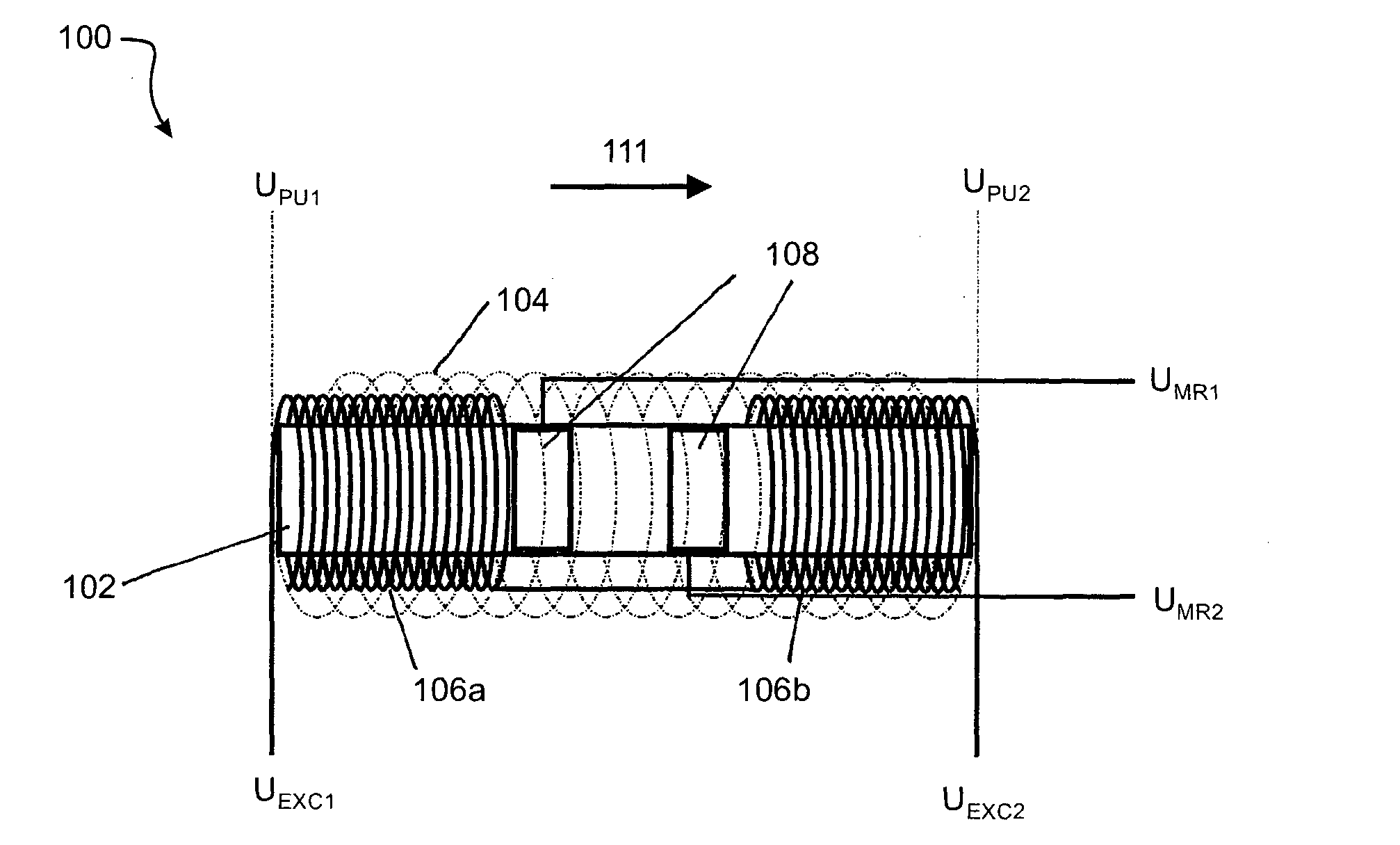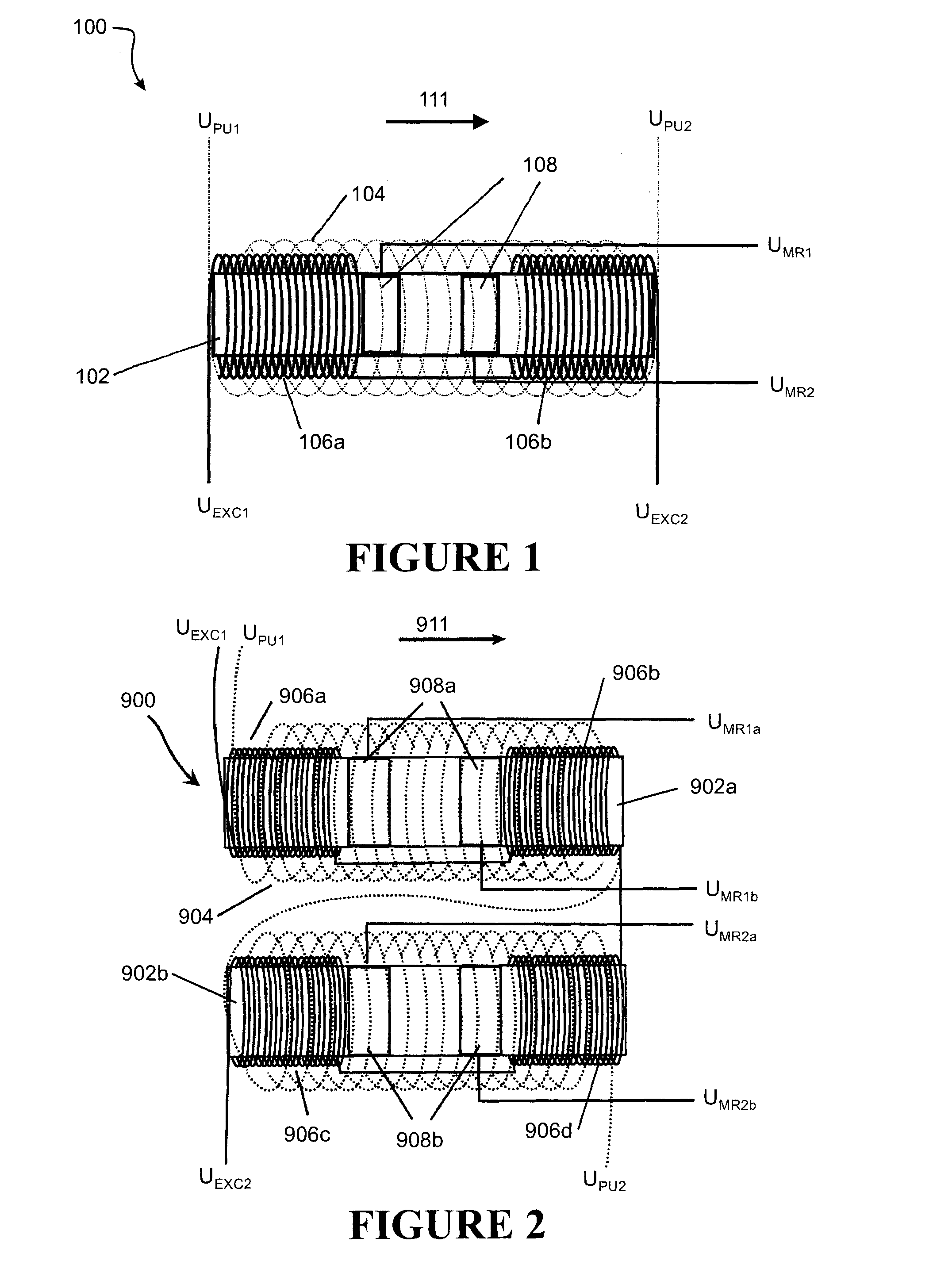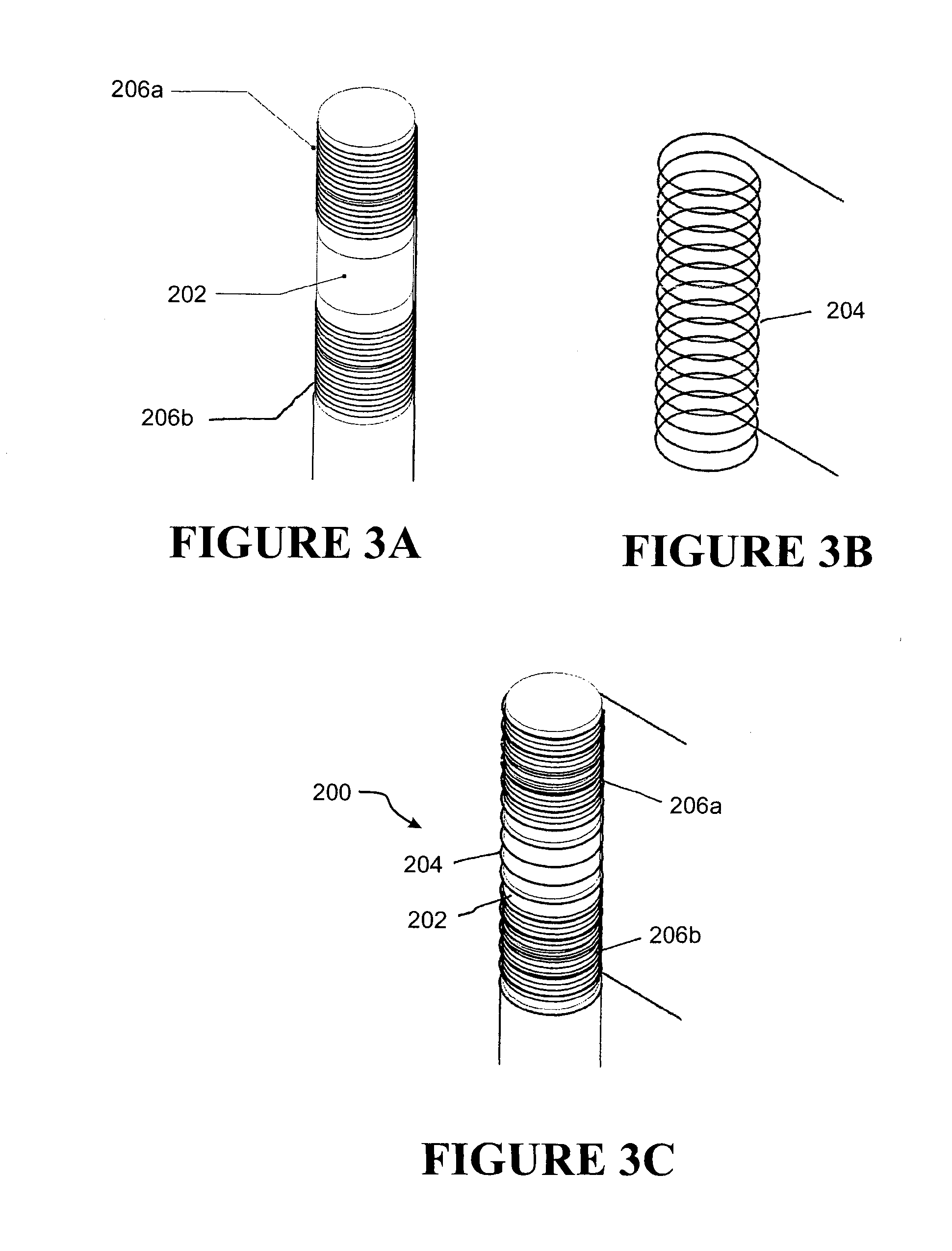Magnetometer
a magnetometer and sensor technology, applied in the direction of magnetitude/direction of magnetic fields, measurement devices, instruments, etc., can solve the problems of limited sensor dimensions, limited to 50 mt, and no suitable single magnetic field sensor capable of measuring a wide range, so as to improve the signal-to-noise ratio of magnetoresistance measurements
- Summary
- Abstract
- Description
- Claims
- Application Information
AI Technical Summary
Benefits of technology
Problems solved by technology
Method used
Image
Examples
example 1a
Fabrication of a Pellet Core
[0199]A mixed iron oxide nanopowder was obtained using an arc discharge method. The powder contained grains with multiple nanoparticles and it was filtered to ensure that the grain size was less than 60 μm. The pellets were prepared using a hydraulic press, 3 mm die / piston assembly and a pressure of about 3 tons.
[0200]Part of the powder was analysed using a SQUID magnetometer in order to determine its magnetic properties and the results are shown in FIG. 10. The powder showed a saturation magnetization of about 72 emu / g, which is consistent with Fe2O3 and Fe3O4. The magnetization showed no hysteresis within the limit of detectability, which is consistent with the majority of the material being superparamagnetic.
[0201]Cores were made with a diameter of 3 mm and a length of 8 mm by stacking pressed pellets that were about 1 mm thick. Two electrodes were deposited on to the last pellet in a configuration similar to that shown in FIG. 5a. The gap between the ...
example 1b
Fabrication of a Thin Film Core
[0202]A core for a planar magnetometer was also fabricated by ion beam synthesis. Iron atoms were implanted in SiO2 on a Si substrate with an energy of 15 keV and a fluence of 1×1016 ions cm−2, followed by electron beam annealing at 1000° C. for two hours. A 8 mm×4 mm sample was obtained. Two electrical contacts were fabricated on the film by depositing a 2 nm thick titanium layer followed by a 20 nm thick aluminium layer using a high vacuum vapour deposition system. The dimensions of the electrodes are 4 mm×3 mm square and the gap between the electrodes was 1 mm. The titanium layer was used to improve the adhesion and electrical contact between the aluminium and the magnetic material. The samples were annealed in vacuum at 300° C. for 30 minutes to further improve the contact resistance. The magnetoresistance is plotted in FIG. 10 for a current of 0.01 mA.
example 2
Wide Dynamic-Range Measurement with a Magnetometer
[0203]Cylindrical cores were fabricated from iron oxide nanopowder and were then pressed as described in the previous example 1a and then inserted in a hollow plastic tube with the excitation coils and pick-up coil wound around it. The excitation coils were made of 0.05 mm insulated copper wire with 275 turns each, and positioned in the same configuration as shown in FIG. 3. Thin plastic adhesive tape was used to separate the excitation and pick-up coils. The pick-up coil was wound over the excitation coils in a manner similar to that shown in FIG. 3. The wire for this coil had a diameter of 0.1 mm wire and there was 200 turns.
[0204]The excitation frequency was 40 kHz. The signal from the pick-up coil was measured using homebuilt electronics that contained a lock-in amplifier. The magnetoresistance signal was measured using a stable current source and the current was measured using a voltmeter. The system was tested in a wire-wound s...
PUM
 Login to View More
Login to View More Abstract
Description
Claims
Application Information
 Login to View More
Login to View More - R&D
- Intellectual Property
- Life Sciences
- Materials
- Tech Scout
- Unparalleled Data Quality
- Higher Quality Content
- 60% Fewer Hallucinations
Browse by: Latest US Patents, China's latest patents, Technical Efficacy Thesaurus, Application Domain, Technology Topic, Popular Technical Reports.
© 2025 PatSnap. All rights reserved.Legal|Privacy policy|Modern Slavery Act Transparency Statement|Sitemap|About US| Contact US: help@patsnap.com



